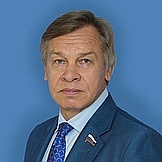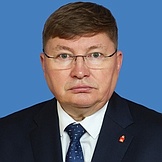Regional flags and emblems


PROFILE
Established 1 December 2005 following the integration of the Perm Region and Komi-Perm Autonomous Area
Capital Perm
The Perm Territory is part of the Volga Federal District
Area 160,200 sq km
Population 2 482 100 (2025)
Ethnic groups
(2020 National Census, %)
Russian – 89,41
Tatar – 4,07
Komi-Permyak – 2,21
Other – 4,31
Administrative divisions (2024)
Municipalities – 21
City districts – 22
Geography and climate
The territory is located in the Kama foothills of the Western Urals at the junction of East European Plain with the Urals. There are plains in the western and central areas, large hills and low mountains in the east.
It borders on the Republic of Bashkortostan, Komi and Udmurtian republics and the Kirov and Sverlovsk regions.
The territory has a temperate continental climate. January temperatures average –16.1°C. July temperatures average 17°C.
The territory has 29,000 rivers, about 800 lakes and 18 water reservoirs, the largest ones are Kama, Votkinsk and Shirokovskoye. Major rivers: Kama and its tributaries Vishera, Yaiva, Kosva, Chusovaya and Sylva.
There are two state nature reserves, Vishersky and Basegi, Permsky State Natural Park and over 20 state nature biological and landscape sanctuaries of regional status.
Government
The legislative branch in the region is represented by the Legislative Assembly of the Perm Territory, which is the permanent, representative and only legislative body of authority in the region.
The Legislative Assembly of the Perm Territory is elected for a five-year term and consists of 60 members, with 28 elected from single-seat constituencies, except for the Komi-Permyatsky District, and two members elected from single-seat constituencies within the Komi-Permyatsky District. The other 30 are elected in the single electoral district, where winners are identified in proportion to the number of votes cast for lists of candidates nominated by electoral associations.
The current Assembly was elected in September 2021. Its term expires in September 2026.
The system of executive bodies of the Perm Territory includes the Governor of the Perm Territory, the Government of the Perm Territory, and other bodies of executive authority of the Perm Territory. The Government of the Perm Territory is the permanent supreme body of executive authority of the region.
The Governor of the Perm Territory is the highest-ranking official, who runs the executive branch and determines the system and structure of the territory’s executive agencies, as well as forms the Government of Perm Territory.
He is elected for a term of five years by the citizens of the Russian Federation permanently residing in the region.
The term of the incumbent Governor expires in September 2025.
Economy and natural resources
The territory has over 1,500 developed deposits of some 60 kinds of natural resources. The most developed are production of oil, gas, potassium, magnesium and sodium salts, chemical, metal and concrete raw materials, construction materials and fresh subsurface waters. The territory ranks first in the Urals in terms of water resources.
The territory’s industrial economy makes it one of the most developed regions in Russia. Industry accounts for some 55% of the regional GDP.
The leading industries of the Perm Territory are the fuel and energy industry, the petrochemical industry, the production of ferrous and non-ferrous metals, machine-building, forestry and the food industry (Lukoil-Perm, Lukoil-Permnefteorgsintez).
The chemical industry produces mineral fertiliser and accounts for 100% of potassium fertiliser made in Russia (Uralkali).
The territory also manufactures aircraft and rocket engines, oil extracting and mining equipment, communications equipment, vessels, cable, and pulp and paper products (Motovilikha Plants, Perm Engines). The construction sector is also strongly implanted in the region.
The territory’s electricity is generated by thermal power stations and hydroelectric power stations (Kama Hydroelectric Power Station and Votkinsk Hydroelectric Power Station), as well as combined heat and power stations.
Agriculture accounts for some 1,5% of the regional GDP. The main areas are the production of grain crops, potatoes and vegetables. Livestock breeding focuses on beef and dairy production, and pig and poultry farming. Beekeeping is also developed.
The city of Perm is a major railway junction with trains travelling west- (Kazan, Moscow, St Petersburg) and east-bound (Kungur, Yekaterinburg and Vladivostok), as well as to the Gornozavodsky District (Ulgeuralskaya, Nizhny Tagil, Priobye). Transit cargo transportation is growing.
Culture and tourism
The historical and cultural heritage of the Perm Territory is unique and is related to the indigenous peoples of the region, as well as the development of salt production and mining. The monuments of the geological Permian period are also very important.
Perm is the business and cultural centre of the territory. The city has a large number of museums and theatres. The Perm Theatre of Ballet and Opera is known in Russia and abroad for its performances; it is the venue of the international ballet festivals Dyagilevsky and Arabesque.
In the Perm Territory, there are medieval Russian towns of Cherdyn, Solikamsk, Usolye and Kungur. Cherdyn is a unique town and museum, the cradle of the Russian civilisation in the Urals. Until the 15th century, Cherdyn was the capital of a mighty state, Perm Velikaya (Great Perm). Almost all buildings in the town are architectural landmarks. Each summer the Heart of Parma historical and cultural festival takes place near Cherdyn.
The Great Tea Road is a popular international tourist route, which passes through Kungur. The city once stood on the Tea Road, one of the main trade routes, and 80% of tea was delivered through the city. Near Kungur there is the Belogorsky St Nicholas Monastery, dubbed the Urals Athos, which is located on the top of Belaya Gora (White Mountain). The monastery is one of the key landmarks that attracts large numbers of pilgrims.
The multi-ethnic population of the Perm Territory offers great opportunities for ethnographic tourism. Komi-Permyaks, Udmurts, Khants and Mansi people, who have lived in the Perm Territory for centuries, have not lost their identity. Their folklore and culture reflect local traditions and features of various areas of Russia. Many peoples have preserved elements of pre-Christian traditions and beliefs. There are representatives of over 120 indigenous peoples in the region. The Perm Territory has excellent sites for rock climbing and active winter sports. The Takman, Gubakha, Ashatli and Zhebrei alpine resorts attract numerous tourists every year.
The region is also famous for its caves. The Kungur Ice Cave is the most famous one, along with the underwater Orda Cave, which offers unlimited opportunities for cave diving. It is Russia’s longest underwater cave, second longest in Eurasia and the world’s largest underwater gypsum cave. The mountains have lakes with crystal clear water; there are waterfalls of up to 9 m high, and some rivers have underground streams.
The Perm Territory is where tourism began in the Urals, and the health resorts of the Kama region are well known all across Russia. The famous Ust-Kachka resort, the largest health and spa resort in the Urals, has unique medicinal waters and is fitted with modern diagnostic and treatment equipment. The oldest resort, Klyuchi, offers natural mineral waters, medicinal mud and the Klyuchi mineral drinking water.


